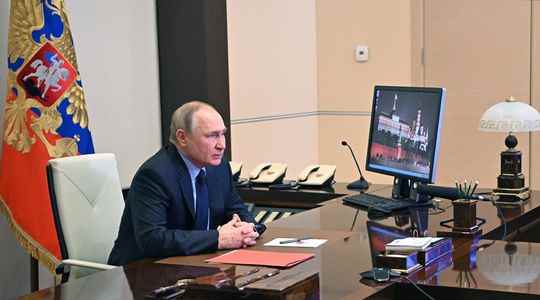Since the beginning of the Ukrainian crisis, the tone of the diplomats at the Elysée Palace has proven to be a very good indicator of the degree of threat. This Thursday, March 3, at the presidential palace, the intonation is serious, almost chilling. Emmanuel Macron comes out of an hour and a half call with Vladimir Putin, during which the Russian president promised to “neutralize Ukraine by military means if necessary” and attacked “the behavior of Nazis” of the Ukrainians. “Without making predictions, we must expect the worst, explains a witness to the call. Nothing in what President Putin said should reassure us.”
Forcing the Europeans to accept Russian conditions
This exchange, carried out on the initiative of the Russian president, sends a very clear message to Westerners: Putin is ready to do anything to achieve his ends. His apparent determination, his isolation during his interventions in front of the camera and his “paranoid” speech, to use an expression from the Elysée, allow him to sow panic in Western populations and put enormous pressure on their leaders. Too great a threat to their security could make the Europeans accept a halt to the war at all costs, that is to say on Russian terms.
Another step in this Kremlin strategy consists in wielding “nuclear blackmail”, as indicated by General Richard Shireff, former deputy commander of NATO, in an interview with L’Express: “Can we imagine Putin going so far as to use nuclear weapons? I think so. The Russians are integrating nuclear thinking into all aspects of their military doctrine and exercises. This is called nuclear blackmail : The Russians are threatening NATO and the West to use this weapon in the hope that the West will back down.”
To sow panic in Europe, the Kremlin is not only talking about nuclear weapons but is also targeting Ukrainian civilian nuclear sites. It is no coincidence that the first Russian attack, on February 24, consisted in seizing the Chernobyl zone. Automatically, memories of the 1986 nuclear accident come back and thousands of Europeans rush to pharmacies to get iodine tablets, the only way to limit the effects of radioactivity.
Nixon’s memory and his “Mad Man” theory
Thursday, a few hours after speaking to Emmanuel Macron, Vladimir Putin launched his troops to attack Zaporijjia, the largest nuclear power plant in Europe. The Russian army did not hesitate to use heavy weapons to push back the Ukrainians, causing a fire in the plant before taking full control. “You all know the word Chernobyl, warned Ukrainian President Volodymyr Zelensky at four in the morning. Russia is doing the same thing again.” Throughout the night, the fear of a serious nuclear accident kept the planet on the alert.
In private, Vladimir Putin never discusses the nuclear threat with Emmanuel Macron. But his public communication, like his impact on public opinion, recalls the geopolitical theory of the “madman”, or “Mad Man” in its original version, put into practice by Richard Nixon during the Cold War. The American president willingly showed his angry and unpredictable side in order to destabilize the Soviet Union and make it believe that he was ready to do anything to fight it, including pressing the nuclear button. Donald Trump had taken over this strategy against Kim Jong-Un, promising “to annihilate North Korea” in the event of threats from Pyongyang. It remains to be seen whether, in the current crisis, the case of Vladimir Putin concerns geopolitical strategy, or psychiatric medicine.
